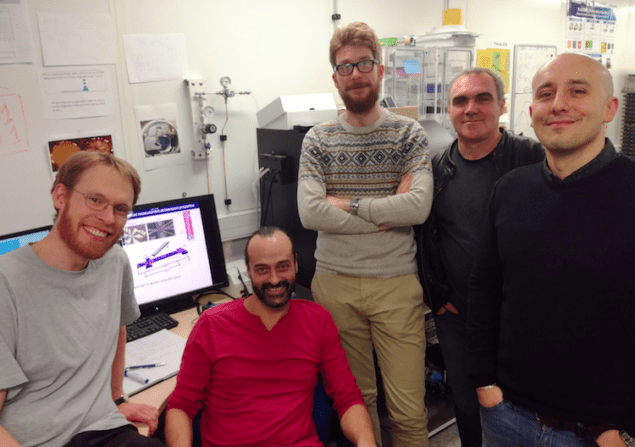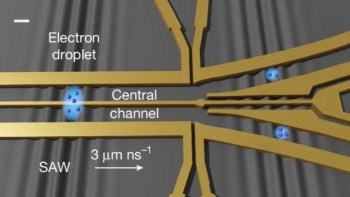
Magnetic skyrmions are quasiparticle magnetic spin configurations with a whirling vortex-like structure that could be used as storage bits in next-generation “racetrack” memories and logic devices thanks to their small size and their robustness to external perturbations. Researchers at CNRS, Thales and the Université Paris-Saclay in France have now succeeded in nucleating these particles using current pulses and electrically detecting their presence by measuring their Hall resistivity at room temperature. The work brings real-world devices based on skyrmions a step closer to reality.
Skyrmions, small magnetic vortices that can be thought of as 2D knots in which the magnetic moments rotate about 360° within a plane, were first discovered in manganese-silicon and cobalt-iron-silicon crystals but they can exist in many materials – and notably in magnetic thin films and multilayers. They could form the basis of future magnetic data storage technologies because they can be made much smaller than the magnetic domains used in modern disk drives to store information. More importantly they can be mobile.
“In previous work, we showed that we could stabilize and image magnetic skyrmions around 100 nm in size in magnetic multilayers of iridium-cobalt-platinum at room temperature,” explains team leader Vincent Cros. “In these experiments, we were unable to control the position and density of the skyrmions, however. In our new study, we have employed a new approach in which we inject short current pulses into the materials, which allows us to nucleate isolated skyrmions located in a strip (or track) designed by electron-beam lithography. The result is that we can now adjust the total number of nucleated skyrmions by tuning different parameters, such as the current pulse width or the intensity of the external magnetic field.”
Directly detecting skyrmions
Being able to nucleate a specific number of skyrmions in a defined area means that the researchers can directly detect their presence by measuring their transverse resistivity using a Hall electrode placed in the area in which the skyrmions have been nucleated.
“One of the most important advances in our work is that we have been able to make electrical measurements on our sample while imaging it magnetically at the same time using magnetic force microscopy,” says Cros. “This is extremely significant and has never been done before and has allowed us to directly correlate how the electrical signal varies with nucleation/annihilation of individual skyrmions in the track.”
Towards real-world applications
This result demonstrates that electrical detection of single skyrmion is feasible and represents an important step toward real-world applications based on these quasiparticles, he tells nanotechweb.org. This detection would correspond to the reading procedure in a skyrmion-based logic device.
The team, whose work was supported by the European Union grant MAGicSky No. FET-Open-665095, will now be working on further reducing the diameter of the skyrmions to 10 nm or less, and further increasing their spin-torque-induced velocity. “As for the electrical detection, we plan to use other physical effects such as the tunnel magnetoresistance in magnetic multilayers, to increase the amplitude of the electrical signal associated with individual skyrmions,” reveals Cros.
The research is detailed in Nature Nanotechnology doi:10.1038/s41565-017-0044-4.



